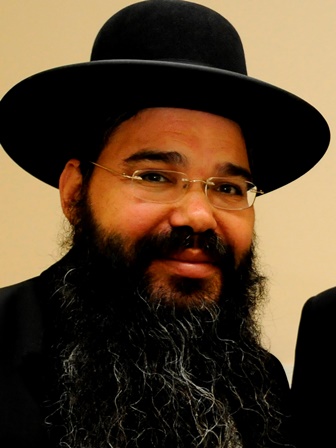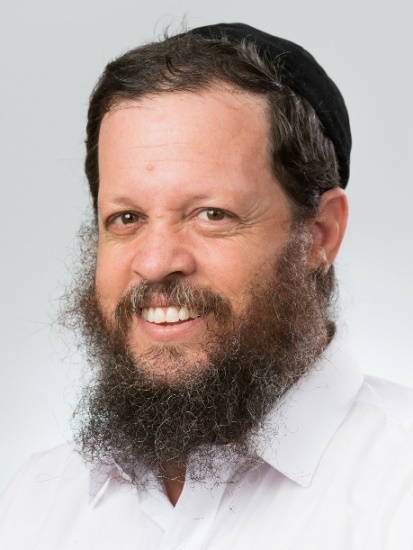Tu B'Shevat: "Deal First with Planting"
הרב זכריה טובי
ראש הכולל
In the Midrash to Parshat Kedoshim (Vayikra Rabbah 25:3) it says:
R. Yehuda b. R. Simon opened: "Follow Hashem, your G-d." (Devarim 13:5) Is it possible for a human to follow G-d? One about Whom it says, "In the sea [is] Your way, and Your path [is] through the mighty waters" (Tehillim 77:20) – and you say, "Follow Hashem?!"
"To Him you shall cling." Is it possible for a human to go up to heaven and cling to the Shechina? One about Whom it says, "For Hashem, your G-d, is a consuming fire" (Devarim 4:24) ... and you say, "Cling to Him?!" Rather, from the beginning of Creation G-d first involved Himself in planting, as it says, "Hashem, G-d, planted a garden in Eden." (Bereishit 2:8) So, too, when you enter the Land, deal first with planting. This is what it says, "When you come to the Land, [and you plant]." (Vayikra 19:23)
There are two questions in the Midrash, with a common answer.
1. How is it possible to walk after Hashem – i.e., how is it possible to perceive Him, to draw close and to cling to him?
2. How is it possible to cling to Hashem – this is the very same question!
As to the answer of the Midrash: "When come to the Land, and you plant" – what is the answer? How do we cling to Hashem through planting?
Chazal fill in this idea in Masechet Sotah (14a), where they pose the same question:
R. Chama b. R. Chanina said: What does it mean, "Follow Hashem, your G-d?" Is it possible for a person to follow the Shechina, for it says, "Hashem, your G-d, is a consuming fire?!" Rather, follow the traits of G-d. Just as He clothes the naked ... you, also, should clothe the naked. G-d visited the sick ... you, also, should visit the sick. G-d comforted the bereaved ... you, also, should comfort the bereaved. G-d buried the dead ... you, also, should bury the dead.
Clinging to G-d means clinging to His traits, through acting with proper manners. How do we cling to the traits of G-d through planting?
"When you come to the Land, and you plant." G-d said to Israel: Even though you will find it full of all good, do not say, 'We will sit and not plant,' but rather be careful to plant, as it says, "and you plant any fruit tree." Just as you entered and you found trees that others planted – you, also should plant for your children. A person should not say, 'I am old. How many [more] years will I live? Why should I toil for others? Tomorrow I will die! ... If he merits, it will be his ... If not, [it will be] for others ... Therefore, a person should not refrain from planting. Rather, just as he found, he should plant more, even if he is old. G-d said to Israel, 'Learn from Me. Do I need, as it were?' [Yet], it says, "Hashem, G-d, planted a garden in Eden, to the east." (Bereishit 2:8)
This is clinging to G-d – planting for the sake of others. Do not care only for yourself, care for the future generations. Even though you will not benefit from the trees – others will benefit from them. This is the trait of G-d, "The world will be built through kindness." (Tehillim 89:3) This is the trait of chesed in the world, upon which the world exists, and this is clinging to G-d, clinging to His traits. Planting represents the basic existence of the world through kindness. This was the trait of Avraham Avinu, the trait of kindness, about whom it says, "He planted an eshel in Be'er Sheva." (Bereishit 21:33) Chazal say that the eshel was Avraham's rest stop, where a person would eat, drink, and bless G-d. Planting is the basis of the trait of kindness in the world.
In Midrash Yerachim, on the months, Rav Kook zt"l writes about the month of Shevat: "The cheshek (desire) to plant trees flows from the chefetz to benefit the generations, which is most expressed through the carob tree."
There are three kinds of desire: 1) Cheshek – a simple urge to plant. But there is a higher level: 2) Ratzon – a desire to plant and benefit from the planting. But there is a higher level: 3) Chefetz – a desire to benefit others. The ideal planting, Rav Kook says, is the chefetz to benefit future generations, which is expressed through planting the carob tree, which bears fruit only after seventy years. The carob is the expression of the desire to do good with others, and not for personal benefit, as Chazal day about R. Chanina b. Dosa: "The entire world is sustained because of R. Chanina, My son, whereas My son Chanina suffices with a kav (small measure) of carob from Erev Shabbat till Erev Shabbat." (Chulin 86a) [Translator's note: For the American audience, let us not forget Johnny Appleseed.]
It is possible, however, to see another facet in the Midrash, not only what relates to the closeness of an individual person through clinging to the traits of G-d. There is also the connection of Am Yisrael to G-d that is expressed through striking roots in Eretz Yisrael. This connection is accomplished through a joint endeavor of those who are coming together.
Eretz Yisrael is the joining point of G-d and Am Yisrael. G-d's planting means connecting with the world: "For Hashem's portion is His nation, Yaakov is the lot of his inheritance." (Devarim 32:9) "G-d said: Let Israel come, who became My portion, and inherit the Land that came as My portion." (Tanhuma Re'eh, 8) The sanctity of Eretz Yisrael flows from G-d's appearance specifically in this place: "The eyes of Hashem, your G-d, are on it, from the beginning of the year to year's end." (Devarim 11:12)
Thus, our connection to Eretz Yisrael is through planting, which expresses our possession of the Holy Land. It serves as the joining point and connection of Am Yisrael with G-d. This is following G-d and clinging to Him, which flows from, "When you come to the Land, and you plant" – deal first with planting!
קוד השיעור: 3672
(Translated by Rav Meir Orlian)
לשליחת שאלה או הארה בנוגע לשיעור:


.jpg)


